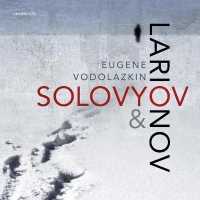- ホーム
- > 洋書
- > 英文書
- > History / World
Full Description
Animals have always been integral to culture. Their interaction with humans has intensified since the onset of domestication resulting in higher incidences of animal disease due to human intervention. At the same time, human care has counter-balanced pressures of natural selection, reducing morbidity among wild animals. Prior to the emergence of a veterinary record, animal disease can only be traced by analysing pathological symptoms on excavated animal remains. This volume presents a collection of studies in the discipline of animal palaeopathology. An international team of experts offer reviews of animal welfare at ancient settlements from both prehistoric and historic periods across Eurasia.
Several chapters are devoted to the diseases of dog and horse, two animals of prominent emotional importance in many civilisations. Curious phenomena observed on the bones of poultry, sheep, pig and even fish are discussed within their respective cultural contexts. Many poorly healed bones are suggestive of neglect in the case of ordinary livestock. On the other hand, a great degree of compassion may be presumed behind the long survival of seriously ill companion animals. In addition to furthering our better technical understanding of animal disease in the past, this volume also mirrors the diversity of human attitudes towards animals during our millennia-long relationship. Some animal bones show signs of extreme cruelty but others also reveal the great attention paid to the recovery of sick animals. Such attitudes tend to be a largely hidden yet are characteristic aspects of how people relate to the surrounding world and, ultimately, to each other.
Contents
Foreword, László Bartosiewicz and Erika Gál
László Bartosiewicz and Erika Gál: Introduction: care, neglect and the "osteological paradox"
Kamilla Pawłowska: Animal diseases in Neolithic societies: Çatalhöyük (Turkey) in the spotlight
László Bartosiewicz, Éva Á. Nyerges and Anna Zs. Biller: Palaeopathology at the Eneolithic tell settlement of Polyanitsa (Bulgaria) investigated by Sándor Bökönyi
Erika Gál and Günther Karl Kunst: Limping to the temple - Palaeopathology at a Roman sacrificial site in Carnuntum, Austria.
Nemanja Marković, Oliver Stevanović, Maciej Janeczek, Darko Marinković, Nikola Krstić and Vujadin Ivanišević: Animal Health in Caričin Grad (Justiniana Prima) in Time of Transition: Preliminary Results
Yasha Hourani: Congenital anomalies and traumatic injuries in dogs from Laodicea in Canaan (Hellenistic Beirut, Lebanon)
Lauren Bellis: Reviewing the pathology and welfare of dogs in Roman Britain
Henriette Baron: Four Equestrian Burials from the Avar Cemetery at Vienna Csokorgasse, Austria: The health of horses and dogs
William Taylor and Tumurbaatar Tuvshinjargal: Horseback Riding, Asymmetry, and Changes to the Equine Skull: Evidence for mounted riding in Mongolia's Late Bronze Age
Pamela J. Cross: Where have all the Mares Gone? Sex and "gender" related pathology in archaeological horses: clues to horse husbandry and use practices
Kyra Lyublyanovics: Pelvic fracture in horse: a late medieval case from Karcag-Orgondaszentmiklós, eastern Hungary
László Bartosiewicz: Taphonomy and disease prevalence in animal palaeopathology: The proverbial "veterinary horse"
Henriette Baron: From arthrosis to necrosis: Many, many pathological chickens from the Avar cemetery at Vienna Csokorgasse
Annamária Bárány: "Babos" (spotted) pigs in Zalavár/Mosaburg, SW Hungary: Possible causes of a tusk pathology
Yves Darton and Isabelle Rodet-Belarbi: Damage caused by permanent fetters in present-day sheep on the island of Delos (Greece)
Márta Daróczi-Szabó and László Daróczi-Szabó: Medieval multi-horned sheep from present-day Budapest, Hungary
Jennifer Harland and Wim Van Neer: Weird Fish: Defining a role for fish bone pathologies
Hanna Kivikero: Skeletal anomalies in medieval and early modern fish: A case study from Castle Kastelholm in the Baltic Sea








